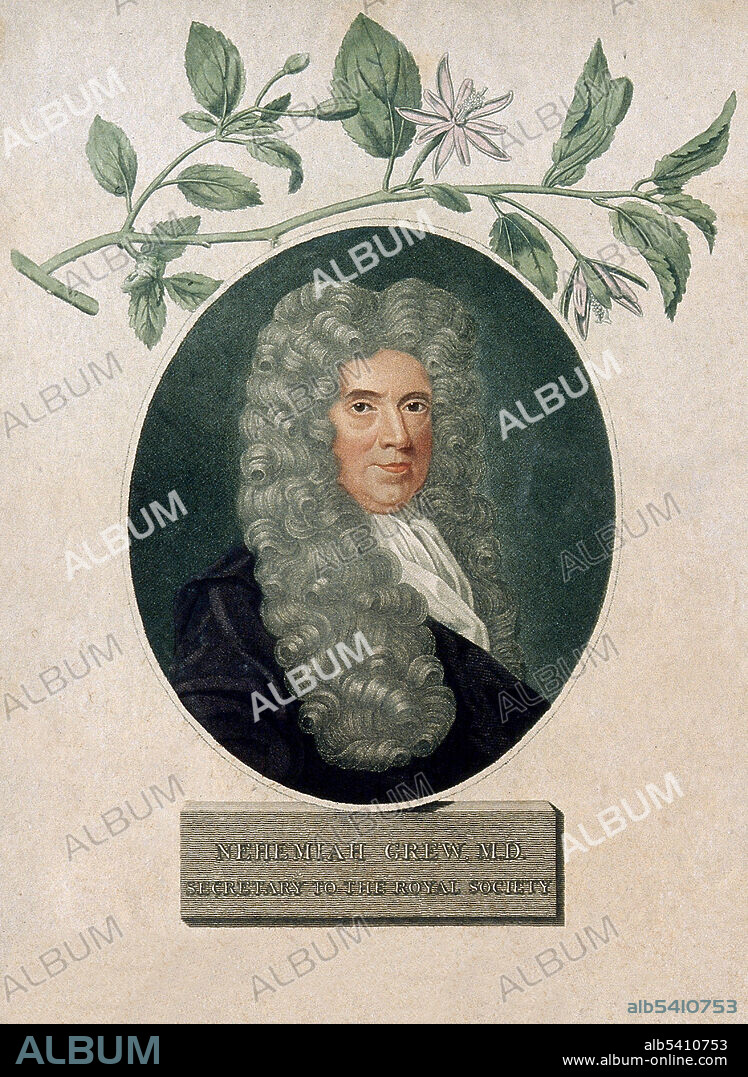alb5410753
Nehemiah Grew, English Plant Anatomist and Physiologist

|
Add to another lightbox |
|
Add to another lightbox |



Buy this image.
Select the use:

Title:
Nehemiah Grew, English Plant Anatomist and Physiologist
Caption:
Nehemiah Grew (September 26, 1641 - March 25, 1712) was an English plant anatomist and physiologist, known as the Father of Plant Anatomy. In 1671 he took the degree of M.D. at Leiden University. In 1672, he settled in London, and soon acquired an extensive practice as a physician. In 1682 he published Anatomy of Plants, which also was largely a collection of previous publications. It was divided into four books, Anatomy of Vegetables begun, Anatomy of Roots, Anatomy of Trunks and Anatomy of Leaves, Flowers, Fruits and Seeds, and was illustrated with 82 plates, while appended to it were seven papers mostly of a chemical character. He described nearly all the key differences of morphology of stem and root, showed that the flowers of the Asteraceae are built of multiple units, and correctly hypothesized that stamens are male organs. Anatomy of Plants also contains the first known microscopic description of pollen. Much of Grew's pioneering work with the microscope was contemporary with that of Marcello Malpighi and the two reportedly borrowed freely from one another. He is also considered to be one of the pioneers of dactyloscopy. He was the first person to study and describe ridges, furrows, and pores on hand and foot surfaces. He died in 1712 at the age of 70.
Credit:
Album / Science Source / Wellcome Images
Releases:
Model: No - Property: No
Rights questions?
Rights questions?
Image size:
3176 x 4350 px | 39.5 MB
Print size:
26.9 x 36.8 cm | 10.6 x 14.5 in (300 dpi)
Keywords:
1701 • 18TH CENTURY • 18TH CENTURY, THE • 18TH CENTURY. • 18TH • CELEBRITIES • CELEBRITY • DACTYLOSCOPIST • ENGLISH • FAMOUS PEOPLE • FAMOUS • FATHER OF PLANT ANATOMY • HISTORY • MAN • MEN • NEHEMIAH GREW • PERSONALITY • PHYSIOLOGIST • PLANT ANATOMIST • SCIENCE AUTHOR • XVIII CENTURY
 Pinterest
Pinterest Twitter
Twitter Facebook
Facebook Copy link
Copy link Email
Email
